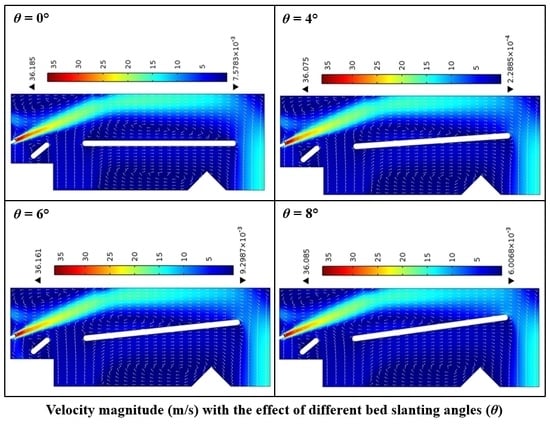Numerical Analysis to Improve the Ballistic Trajectory of an Air-Based Material Density Separator System
Abstract
:1. Introduction
2. Materials and Methods
Mathematical Modeling and Implementation
3. Results and Discussion
3.1. Methodology Validation and Grid Refinement Study
3.2. Air Duct Hole Diameter
3.3. Air Duct Hole Shape
3.4. Bed Slanting Angles
3.5. Air Inlet Velocities
4. Conclusions
Acknowledgments
Author Contributions
Conflicts of Interest
References
- Wang, C.; Wang, H.; Fu, J.; Zhang, L.; Luo, C.; Liu, Y. Flotation separation of polyvinyl chloride and polyethylene terephthalate plastics combined with surface modification for recycling. Waste Manag. 2015, 45, 112–117. [Google Scholar] [CrossRef] [PubMed]
- Wang, C.; Wang, H.; Fu, J.; Liu, Y. Flotation separation of waste plastics for recycling—A review. Waste Manag. 2015, 41, 28–38. [Google Scholar] [CrossRef] [PubMed]
- Siddiqui, M.N. Conversion of hazardous plastic wastes into useful chemical products. J. Hazard. Mater. 2009, 167, 728–735. [Google Scholar] [CrossRef] [PubMed]
- Asokan, P.; Osmani, M.; Price, A.D.F. Assessing the recycling potential of glass fibre reinforced plastic waste in concrete and cement composites. J. Clean. Prod. 2009, 17, 821–829. [Google Scholar] [CrossRef]
- Duval, D.; MacLean, H.L. The role of product information in automotive plastics recycling: A financial and life cycle assessment. J. Clean. Prod. 2007, 15, 1158–1168. [Google Scholar] [CrossRef]
- Hopewell, J.; Dvorak, R.; Kosior, E. Plastics recycling: Challenges and opportunities. Philos. Trans. R. Soc. Lond. B Biol. Sci. 2009, 364, 2115–2126. [Google Scholar] [CrossRef] [PubMed]
- Zhang, D.Q.; Tan, S.K.; Gersberg, R.M. Municipal solid waste management in China: Status, problems and challenges. J. Environ. Manag. 2010, 91, 1623–1633. [Google Scholar] [CrossRef] [PubMed]
- Al-Salem, S.; Lettieri, P.; Baeyens, J. Recycling and recovery routes of plastic solid waste (PSW): A review. Waste Manag. 2009, 29, 2625–2643. [Google Scholar] [CrossRef] [PubMed]
- Andričić, B.; Kovačić, T.; Klarić, I. Properties of recycled material containing poly(vinyl chloride), polypropylene, and calcium carbonate nanofiller. Polym. Eng. Sci. 2008, 48, 572–577. [Google Scholar] [CrossRef]
- Braun, D. Recycling of PVC. Prog. Polym. Sci. 2002, 27, 2171–2195. [Google Scholar] [CrossRef]
- Hearn, G. May the force be with you. IEE Rev. 1997, 43, 147–151. [Google Scholar] [CrossRef]
- Davies, D.K. Charge generation on dielectric surfaces. J. Phys. D Appl. Phys. 1969, 2, 1533. [Google Scholar] [CrossRef]
- Park, C.-H.; Jeon, H.-S.; Park, J.-K. PVC removal from mixed plastics by triboelectrostatic separation. J. Hazard. Mater. 2007, 144, 470–476. [Google Scholar] [CrossRef] [PubMed]
- Hearn, G.L.; Ballard, J.R. The use of electrostatic techniques for the identification and sorting of waste packaging materials. Resour. Conserv. Recycl. 2005, 44, 91–98. [Google Scholar] [CrossRef]
- Alter, H. The recovery of plastics from waste with reference to froth flotation. Resour. Conserv. Recycl. 2005, 43, 119–132. [Google Scholar] [CrossRef]
- Shent, H.; Pugh, R.J.; Forssberg, E. A review of plastics waste recycling and the flotation of plastics. Resour. Conserv. Recycl. 1999, 25, 85–109. [Google Scholar] [CrossRef]
- Gent, M.R.; Menendez, M.; Toraño, J.; Diego, I. Recycling of plastic waste by density separation: Prospects for optimization. Waste Manag. Res. 2009, 27, 175–187. [Google Scholar] [CrossRef] [PubMed]
- Drelich, J.; Payne, T.; Kim, J.H.; Miller, J.D.; Kobler, R.; Christiansen, S. Selective froth flotation of PVC from PVC/PET mixtures for the plastics recycling industry. Polym. Eng. Sci. 1998, 38, 1378–1386. [Google Scholar] [CrossRef]
- Gent, M.R.; Menendez, M.; Toraño, J.; Torno, S. Optimization of the recovery of plastics for recycling by density media separation cyclones. Resour. Conserv. Recycl. 2011, 55, 472–482. [Google Scholar]
- Tsunekawa, M.; Naoi, B.; Ogawa, S.; Hori, K.; Hiroyoshi, N.; Ito, M.; Hirajima, T. Jig separation of plastics from scrapped copy machines. Int. J. Miner. Process. 2005, 76, 67–74. [Google Scholar] [CrossRef]
- Venkoba Rao, B.; Kapur, P.C.; Konnur, R. Modeling the size–density partition surface of dense-medium separators. Int. J. Miner. Process. 2003, 72, 443–453. [Google Scholar] [CrossRef]
- Ferrara, G.; Bevilacqua, P.; De Lorenzi, L.; Zanin, M. The influence of particle shape on the dynamic dense medium separation of plastics. Int. J. Miner. Process. 2000, 59, 225–235. [Google Scholar] [CrossRef]
- Çengel, Y.A.; Cimbala, J. Fluid Mechanics: Fundamentals and Applications, 7th ed.; McGraw-Hill Higher Education: Boston, MA, USA, 2006; ISBN 0071257640. [Google Scholar]
- He, Y. Density distribution in coal dry separation with air dense medium fluidized bed. Fuel Energy Abstr. 2002, 43, 236. [Google Scholar] [CrossRef]
- Luo, Z.-F.; Zhu, J.-F.; Fan, M.-M.; Zhao, Y.-M.; Tao, X.-X. Low Density Dry Coal Beneficiation Using an Air Dense Medium Fluidized Bed. J. China Univ. Min. Technol. 2007, 17, 306–309. [Google Scholar] [CrossRef]
- Mohanta, S.; Rao, C.S.; Daram, A.B.; Chakraborty, S.; Meikap, B.C. Air Dense Medium Fluidized Bed for Dry Beneficiation of Coal: Technological Challenges for Future. Part. Sci. Technol. 2013, 31, 16–27. [Google Scholar] [CrossRef]
- Firdaus, M.; O’Shea, J.-P.; Oshitani, J.; Franks, G.V. Beneficiation of Coarse Coal Ore in an Air-Fluidized Bed Dry Dense-Medium Separator. Int. J. Coal Prep. Util. 2012, 32, 276–289. [Google Scholar] [CrossRef]
- Hafez, K.A.; Elsamni, O.A.; Zakaria, K.Y. Numerical investigation of the fully developed turbulent flow over a moving wavy wall using k–ε turbulence model. Alexandria Eng. J. 2011, 50, 145–162. [Google Scholar] [CrossRef]
- Menter, F.R. Two-equation eddy-viscosity turbulence models for engineering applications. AIAA J. 1994, 32, 1598–1605. [Google Scholar] [CrossRef]
- Keirsbulck, L.; Labraga, L.; Gad-El-Hak, M. Statistical properties of wall shear stress fluctuations in turbulent channel flows. Int. J. Heat Fluid Flow 2012, 37, 1–8. [Google Scholar] [CrossRef]
- Kravchenko, A.G.; Choi, H.; Moin, P. On the relation of near-wall streamwise vortices to wall skin friction in turbulent boundary layers. Phys. Fluids A Fluid Dyn. 1993, 5, 3307–3309. [Google Scholar] [CrossRef]


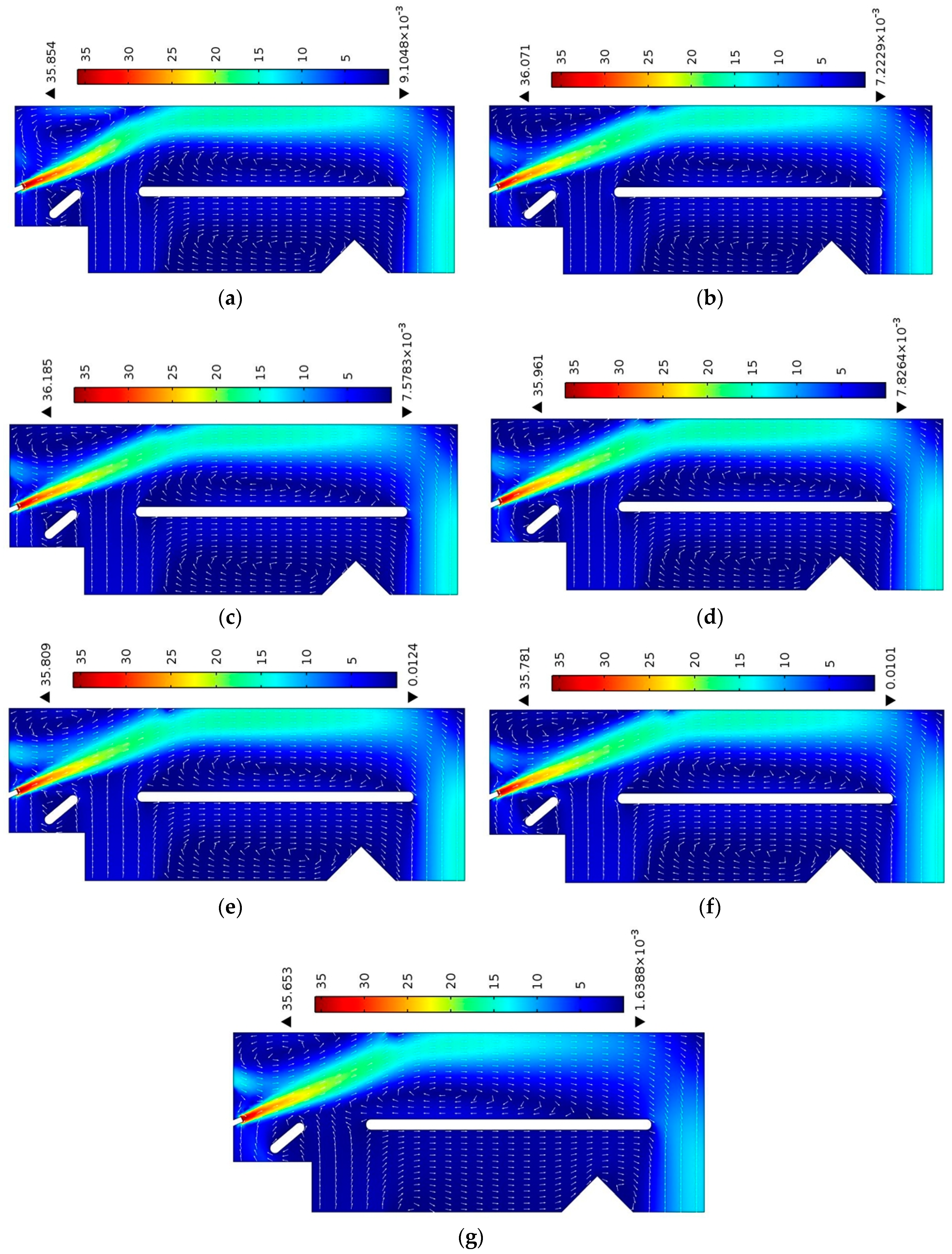
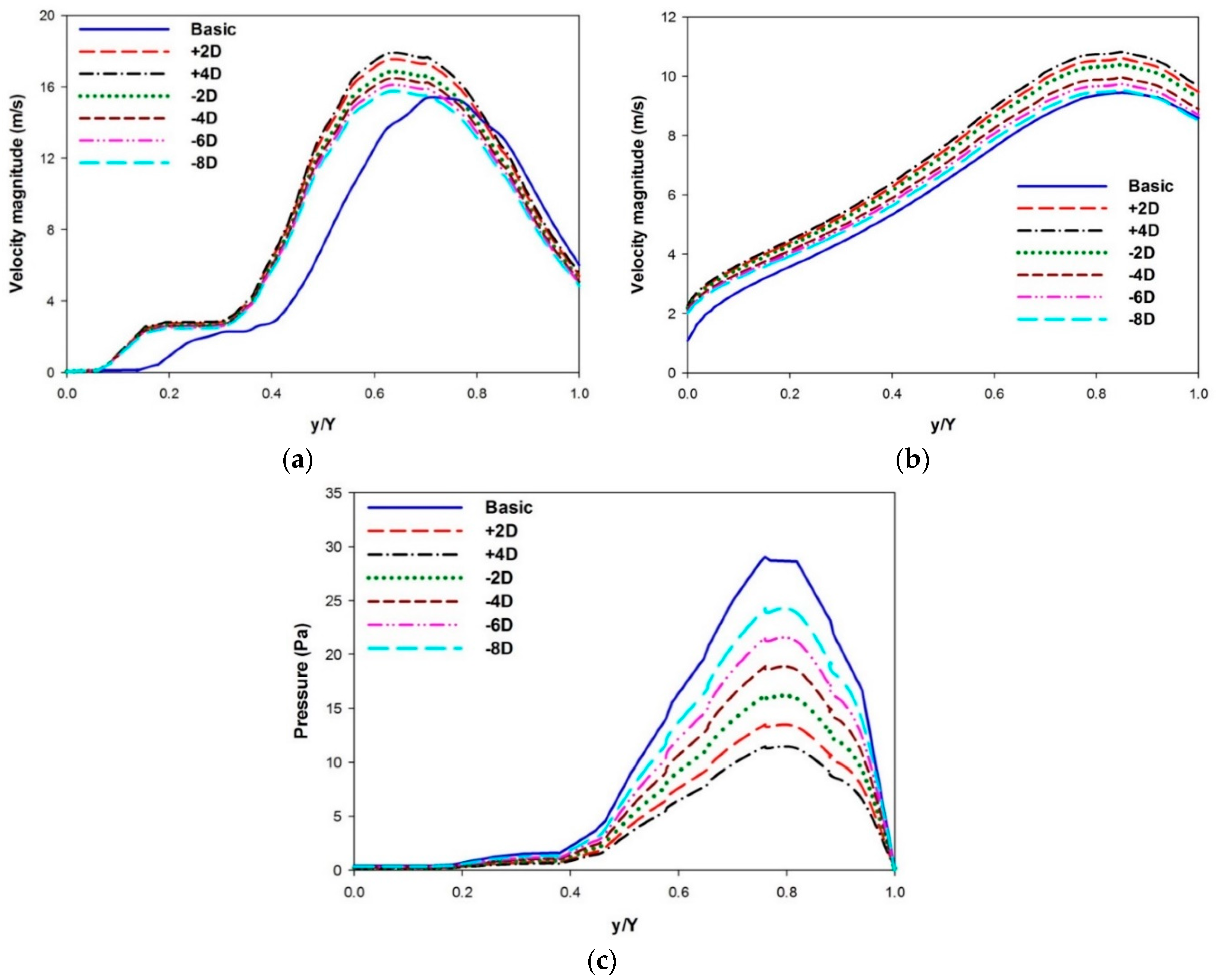

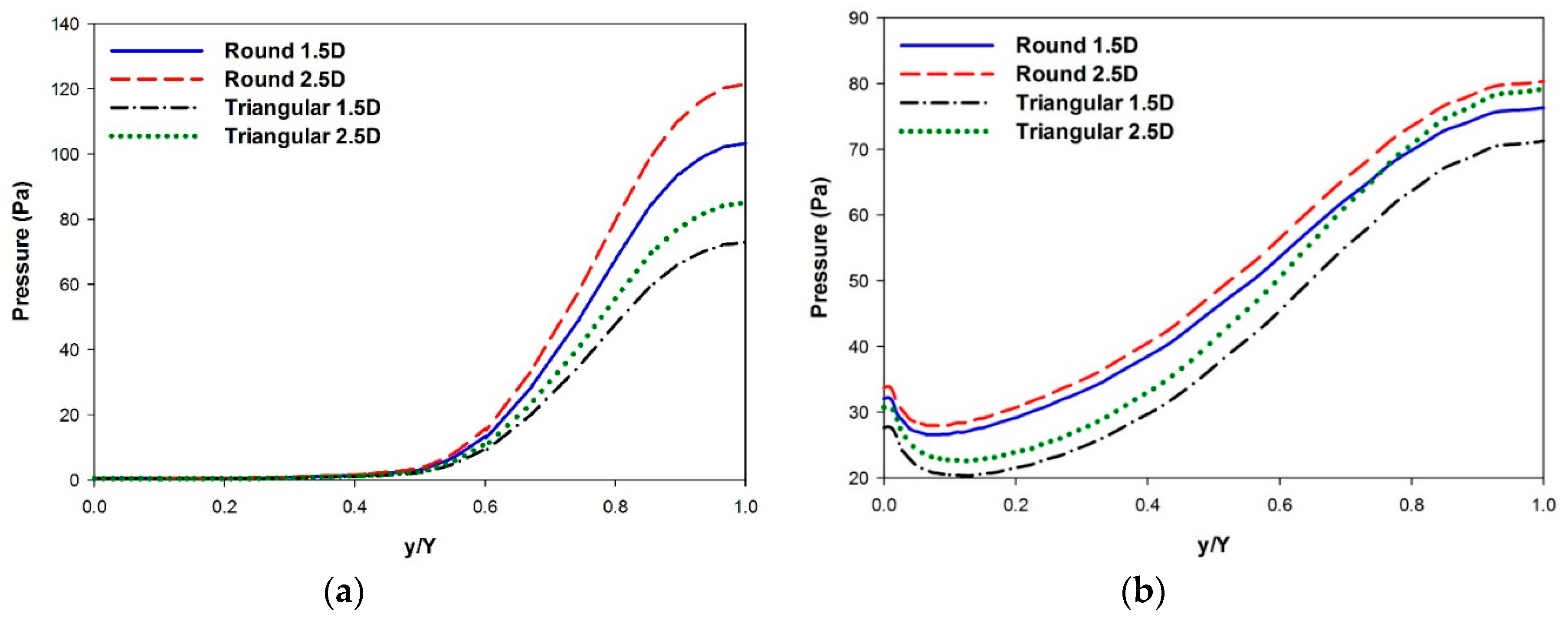
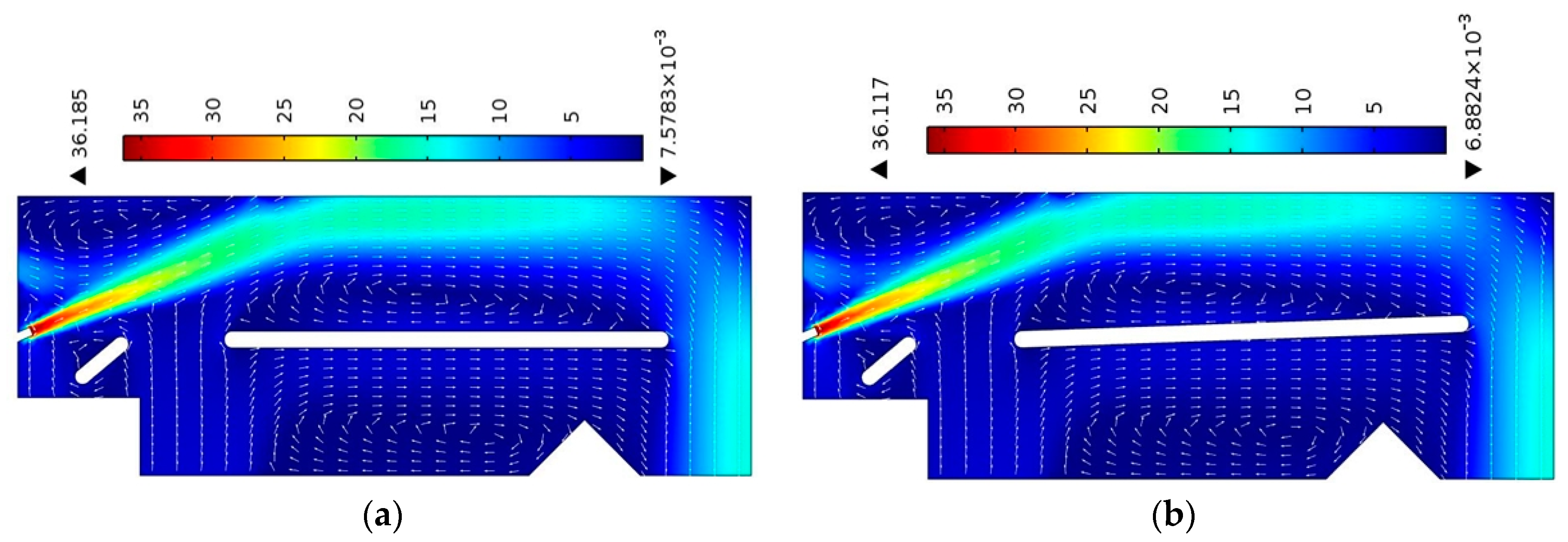
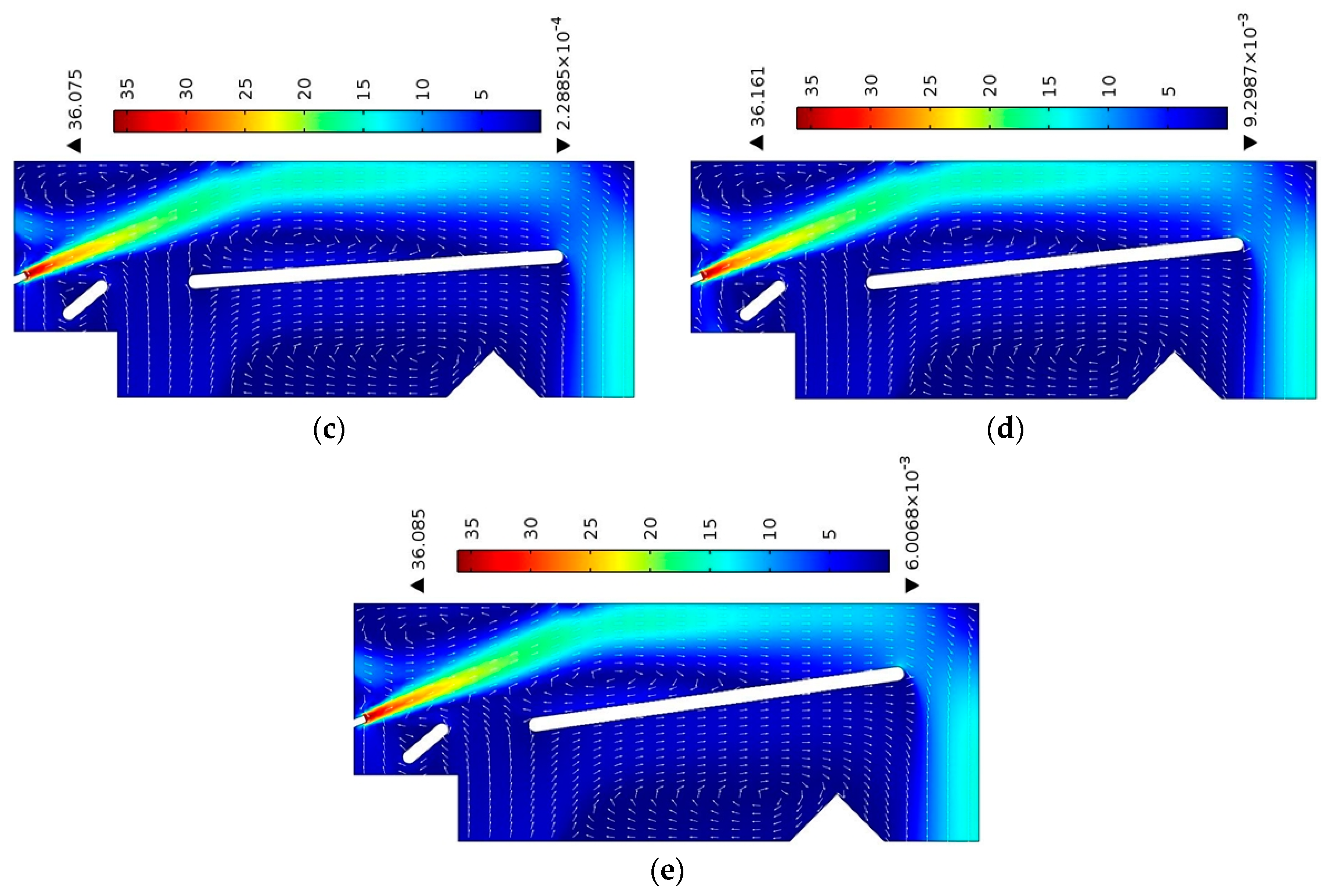
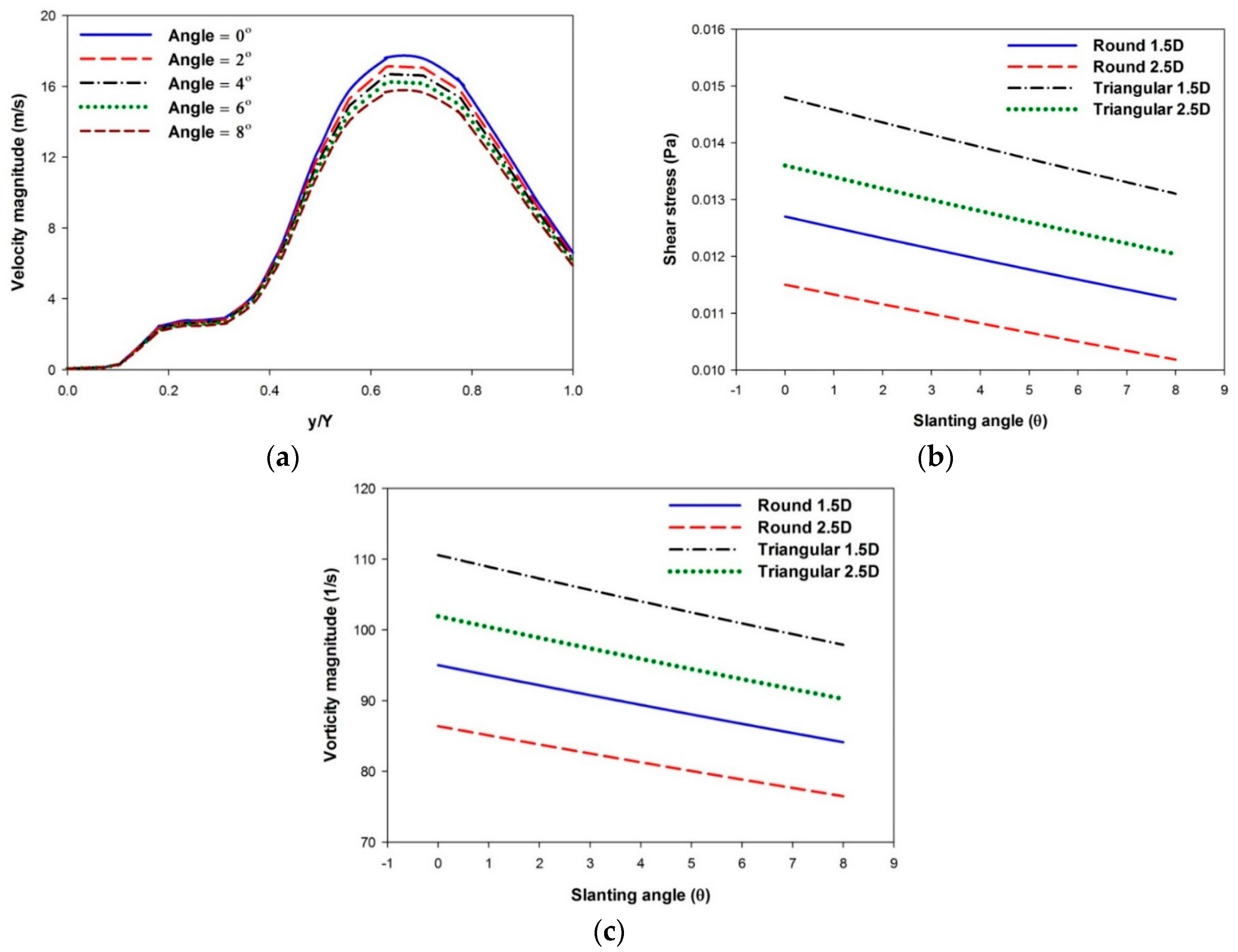
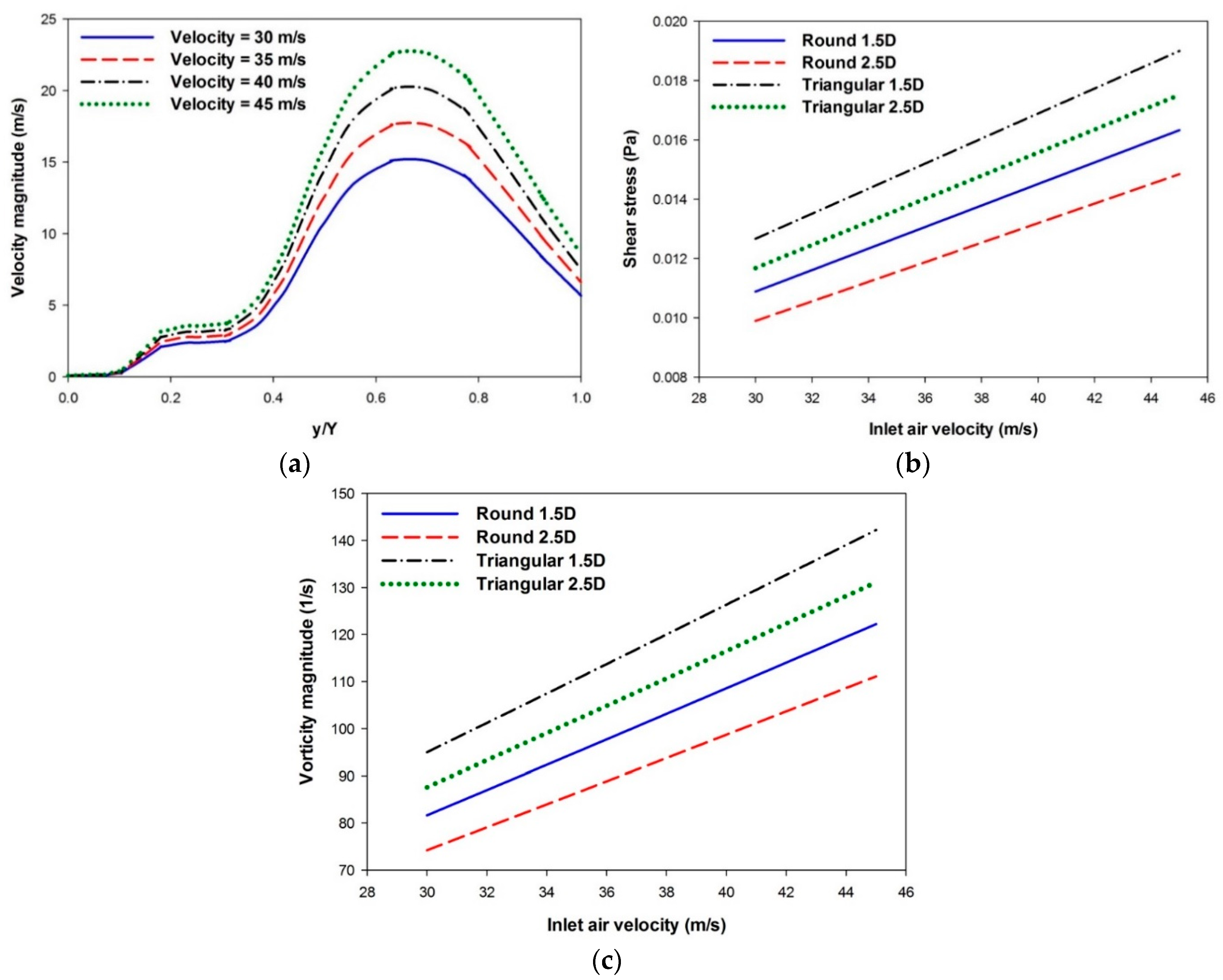
© 2018 by the authors. Licensee MDPI, Basel, Switzerland. This article is an open access article distributed under the terms and conditions of the Creative Commons Attribution (CC BY) license (http://creativecommons.org/licenses/by/4.0/).
Share and Cite
Ali, H.; Kim, K.W.; Bang, S.G.; Chae, H.B.; Shin, S.W.; Park, C.W. Numerical Analysis to Improve the Ballistic Trajectory of an Air-Based Material Density Separator System. Appl. Sci. 2018, 8, 359. https://doi.org/10.3390/app8030359
Ali H, Kim KW, Bang SG, Chae HB, Shin SW, Park CW. Numerical Analysis to Improve the Ballistic Trajectory of an Air-Based Material Density Separator System. Applied Sciences. 2018; 8(3):359. https://doi.org/10.3390/app8030359
Chicago/Turabian StyleAli, Haider, Kyung Won Kim, Sung Gi Bang, Hyun Bae Chae, Seung Wook Shin, and Cheol Woo Park. 2018. "Numerical Analysis to Improve the Ballistic Trajectory of an Air-Based Material Density Separator System" Applied Sciences 8, no. 3: 359. https://doi.org/10.3390/app8030359




